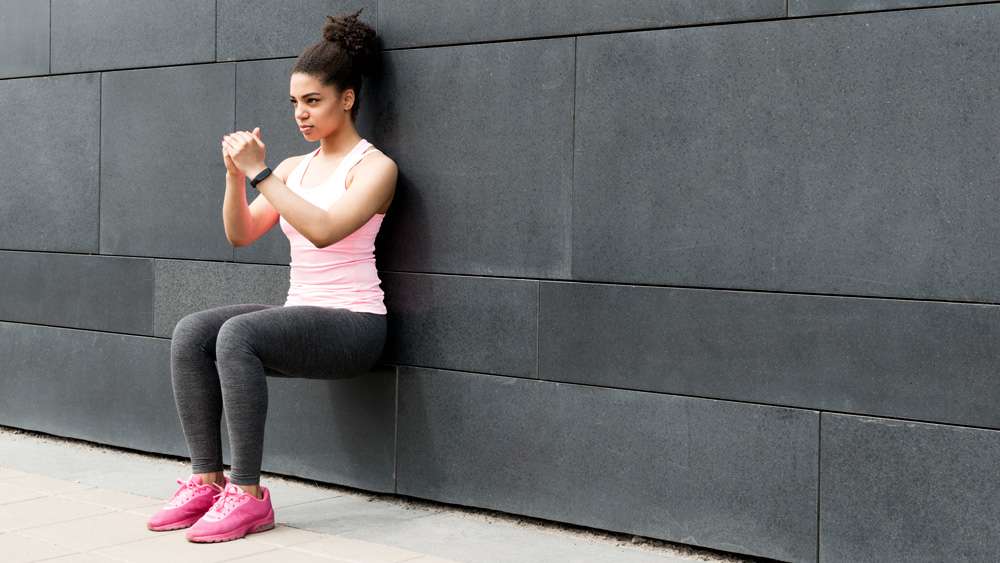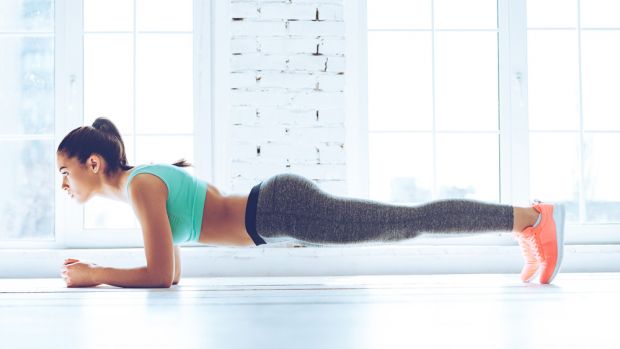Try These Isometric Exercises And Get Stronger Without Moving
Increase your strength and core stability as well as improving your mental game with these challenging isometric exercises. Hold... HOLD!

When someone performs an isometric exercise in a busy gym it looks very out of place – an island of stillness in a sea of people powering through HIIT sessions or chucking heavy weights around. To the uninitiated, simply holding a position like the plank can look pretty easy as well, and in the first few seconds of performing an isometric exercise you might start to wonder if it’s doing you any good at all.
Then the shaking starts, the burning feeling in your muscles begins to grow, and you rightly admonish yourself for ever doubting the potency of isometric exercises.
Regular isometric training will increase your strength and core stability, and there are mental benefits to it as well, because it takes a lot of willpower to hold a challenging position for long periods while your muscles scream at you to let it go.
We asked Marvin Burton, head of fitness at Anytime Fitness, for his favourite isometric exercises. You can use these as workout finishers or do them as a circuit, cycling through three rounds of holding each position for 20 to 30 seconds.
Wall sit
Muscles targeted: Glutes, hamstrings, quads
“Lean back against a wall with your feet hip-width apart,” says Burton. “Lower your hips until they’re level with your knees and there’s a right angle at both hips and knees. Press your feet flat into the floor, Keep your back upright and flat and your head up throughout the hold.”
Pointed-toes plank

Muscles targeted: Core, shoulders
Get the Coach Newsletter
Sign up for workout ideas, training advice, reviews of the latest gear and more.
“Lie face down on the floor,” says Burton. “Pull your elbows under your shoulders, making sure they’re vertically aligned with your forearms pointing forwards and flat on the ground. Lift your hips from the floor and extend onto the ends of your toes. Create a straight line with your body from your shoulders though your hips to your feet.
“Don’t allow your hips to drop. Make sure you’re right on the ends of your toes and they’re not folded under. This will require far more core engagement than a traditional plank.”
L-sit
Muscles targeted: Core, abs
“Sit upright on the ground with your legs extended in front of you and your arms by your sides,” says Burton. “Lean back slightly and raise your legs from the floor. Squeeze through your abs to try and close the distance between your stomach and thighs. Try not to round your spine – maintain perfect straight alignment in your body like a gymnast.”
Incline glute raise
Muscles targeted: Glutes, lower back
“Lie on your back and place your feet flat onto a raised step,” says Burton. “Raise your hips and hold. Focus on squeezing your glutes together and keeping your hips up.”
Dead hang
Muscles targeted: Shoulders, back
“Hang from a high bar,” says Burton. “This will improve your grip and arm strength, and the hanging position also benefits the spine and shoulder muscles. If you’re trying to master pull-ups, this is also a great starting point.”
Anytime Fitness has over 160 gyms across the UK. Visit the website to claim a free day pass
More Isometric Exercises
Side plank
Side planks place a greater workload on your obliques (side abs), as well as the deeper-lying muscles of your core.
Start on your side, with your weight on one elbow and legs together. Place your other arm against your leg. Raise your hips and engage your abs – imagine drawing your bellybutton in towards your spine – and hold this position without any hip sag. Start by doing 15 seconds on each side, so each side plank set lasts 30 seconds. Then gradually increase the duration to a minute. At this point make the move harder by resting your elbow, or even both feet, on a gym ball.
Side plank star
One of the hardest isometric holds, the side plank star requires your core to keep your body not only straight but also stable, as you raise one leg and one arm.
Start with one hand and one foot on the floor. Raise your hips, keeping your core braced, then raise your top arm and leg as high as you can to form a star shape. Hold this position without falling over. Start by doing sets of 15 seconds each side, then gradually increase the time you spend in the hold, working each side equally. Once you can hold it for a minute, either move your arms and leg up and down under control for the duration of the set, or hold a dumbbell in your top hand.

Nick Harris-Fry is a journalist who has been covering health and fitness since 2015. Nick is an avid runner, covering 70-110km a week, which gives him ample opportunity to test a wide range of running shoes and running gear. He is also the chief tester for fitness trackers and running watches, treadmills and exercise bikes, and workout headphones.









